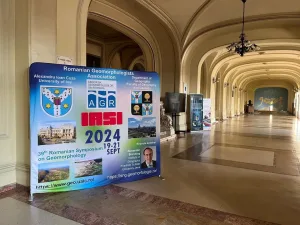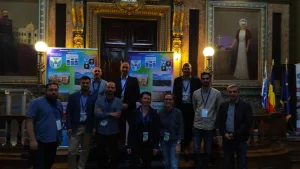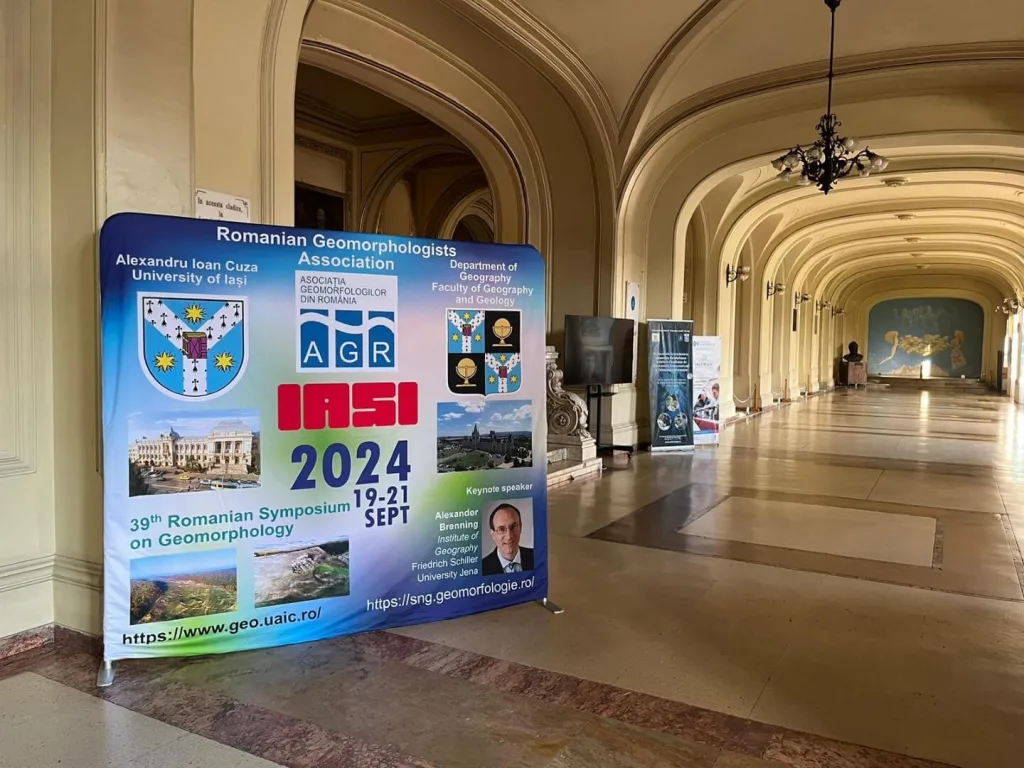The TRACE project’s preliminary findings on cold screes in the Romanian Carpathians were showcased at the 39th Romanian Symposium on Geomorphology, held in Iași, from September 19–21, 2025. The presentation, delivered by Răzvan Popescu from the University of Bucharest, highlighted cutting-edge research into these unique periglacial landforms, which are key indicators of local microclimates and past climate conditions.
Titled “New Data on the Cold Screes from the Romanian Carpathians”, the work presented high-resolution, high-precision data on the chimney effect, a process where cold air sinks into scree slopes, maintaining lower ground temperatures year-round. Measurements were obtained using an ultrasonic anemometer installed directly in the field, which captured how the thermal threshold for air flow direction shifts throughout the year, offering valuable insights into the seasonal dynamics of these systems.
Additionally, the research revealed, through thermal infrared imaging, that overcooled screes are not limited to previously known sites but are also present in other parts of the Romanian Carpathians, including the Parâng Mountains. This expands the understanding of how widespread and significant these cold scree environments are in Romania.
Beyond the TRACE presentation, the symposium featured several other scientific sessions focusing on climate change from a geomorphological perspective, highlighting a growing research interest in how landscapes respond to climatic variability.
These findings are crucial for understanding how microclimatic cold spots function in the Carpathians and how they may be affected by ongoing climate change — offering both scientific value and practical importance for environmental monitoring and conservation efforts.








